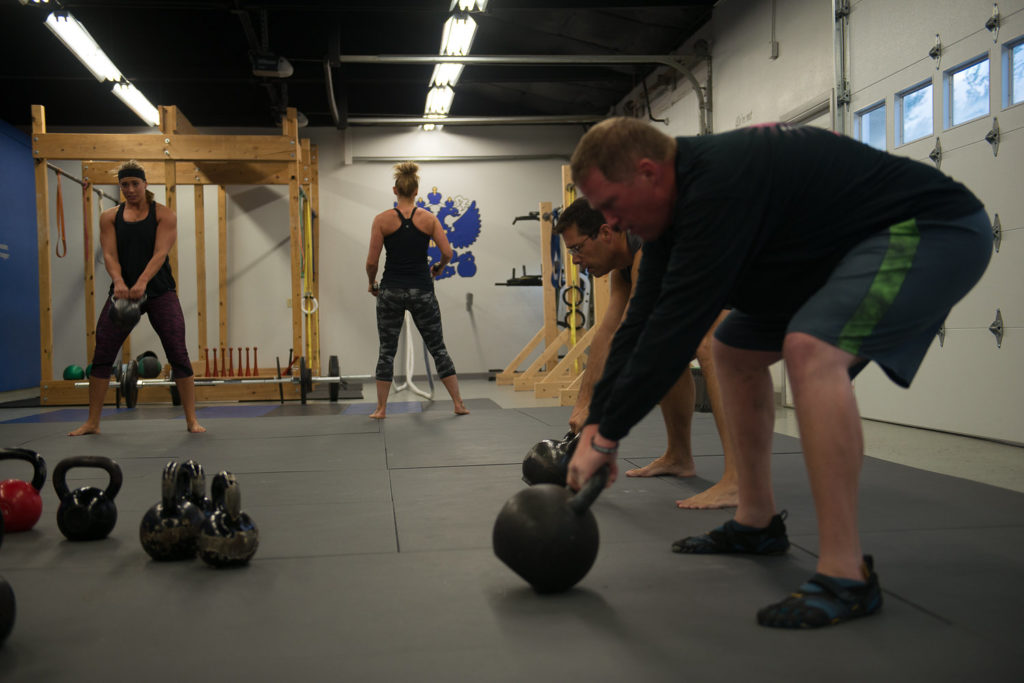This video is from the Red Bull Rampage Downhill Mountain Bike competition held periodically in Virgin, Utah.
It’s an amazing sight. These guys are taking what many of us assume to be a relatively simple process-riding a bicycle-and bringing it to a level of skill and fearless precision that is almost inhuman. Their rides are over in a matter of seconds and once they push of the edge of the cliff, there is no time for real, conscious thinking. They know the route they plan on taking, they visualize it beforehand and their years of experience take it from there.
Millions of tiny calculations are being made subconsciously through sheer reaction; through well trained, heavily reinforced patterns in order to balance their bikes just right, drop off ledges with the right amount of speed, and touch the brake for just a second but not too late.
They have been refining this exceptional level of skill for years in order to build sufficient prediction patterns in their neocortices to know what each moment of that ride will feel like and how to control the bike from there.
Obviously, this is not something that you’re going to be doing anytime soon. But you still know how to ride a bicycle right?
This next video is of a man attempting to ride a bicycle five meters down the street. The catch is that the bike has been modified so that when the handebars turn left, the front wheel turns right. A foreign concept, for sure, but you’d think that with a little effort one could still figure it out.
That’s what this guy thought too.
The thing is that the patterns you’ve already established in your nervous system are exponentially faster to react than your conscious mind is. Even though he’s thinking, “If I want to turn left, just turn the handles right,” by the time he’s halfway through that cognition his hands have already cranked the wheel the wrong way. This is how your brain directs physical activity with everything. And the more heavily ingrained the pattern you’re attempting to overcome, the more difficult it will be to do so, particularly if you’re under any kind of stress.
The first time someone walks into our gym, we expect them to have some sort of movement inefficiency. It could be that their glutes or scapular retractors are neurologically shut down, their hip flexors or pecs are too tight, their ankles, hips and thoracic spine are immobile or their knees and lumbar spine are unstable. In most cases, it’s all of the above to some degree.
This isn’t because our gym specializes in rehab cases. We train everyone from weekend warriors to world champion fighters. It’s because almost everyone who hasn’t spent time with a good trainer focused on movement quality will have some restrictions.
When a person with these inefficiencies does even a bodyweight squat, there are going to be a few technical flaws to the movement. Muscles will be firing inappropriately and joints will be made vulnerable. Every single rep this person does will be strengthening this flawed pattern.
Now, if you take this person and increase the stressor by having them move faster, do more reps and sets or use more weight, you’re increasing the rate at which this pattern is reinforced.
What happens in many cases, in many gyms across the country, is that the coach or the athlete himself fails to see these movement pattern flaws or decides them to be “good enough” and this pattern is continually strengthened and reinforced.
At first, this probably won’t be a problem. Sure, aches and pains don’t seem to be going away, but the athlete is still getting stronger and faster despite the faulty pattern.
The time will come though, when the athlete’s progress is either limited by this weak pattern or an injury finally sidelines him “out of nowhere.”
At this point, it’s time to re-train the pattern. The athlete is going to have to learn all over again how to squat (or any other movement he trains) because now if he doesn’t, he is either going to continue falling short in his sport, or he’s going to continue being injured.
Think back to the second bicycle videos. We all like to think that athletically we’re moving in the direction of the first video. Strong, precise and skilled. But what about this athlete who has built strength and speed on top of a flawed movement? Those neurological patterns are now equivalent to instincts of the man trying to ride the backwards bicycle in the first video. They’re going to be incredibly difficult to overcome despite good intentions and a knowledge of correct technique.
Now he’s trying to squat with his heels rooted into the floor and do kettlebell swings with his glutes instead of his lower back, but with every rep, that old, strong pattern is going to kick in just as quickly as the handlebars on that bike turning the wrong direction. He’s going to have a long, challenging road ahead of him. And even once he’s learned to move pretty well with a low load, if he becomes fatigued or lifts a maximal effort weight, there is a good chance that he would regress to his old patterns, under-perform and injure himself.
Every rep you do in the gym that is not reinforcing a quality pattern is reinforcing a faulty one. It’s reinforcing a weakness, and that weakness now has a higher likelihood of being habituated and recalled in the future.
Train for flawless simplicity. Train for high quality movement first. Then, and only then, should you start strengthening and reinforcing that movement pattern. If you don’t, someday you’ll probably find yourself trying to perform like the guys in the first video but looking like the guy in the second one.

